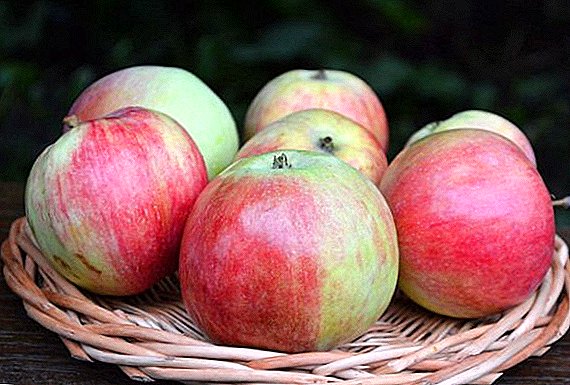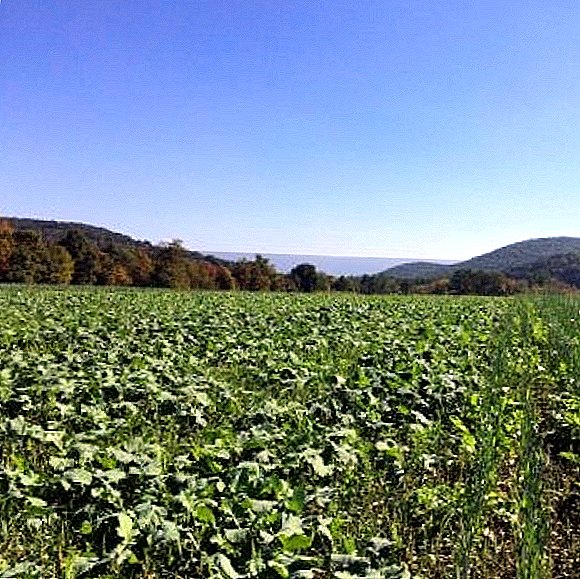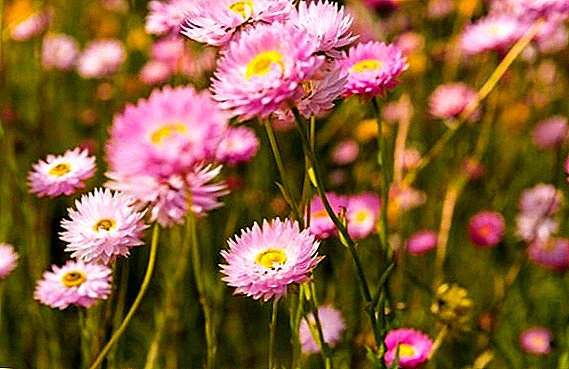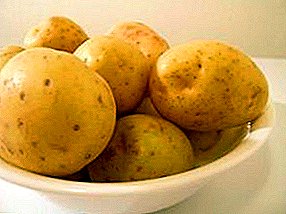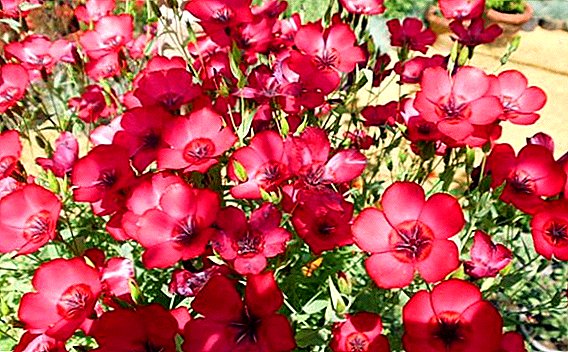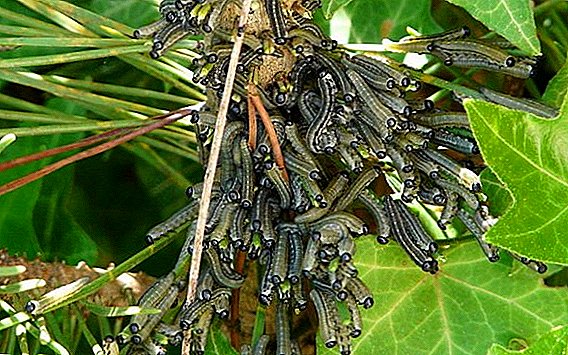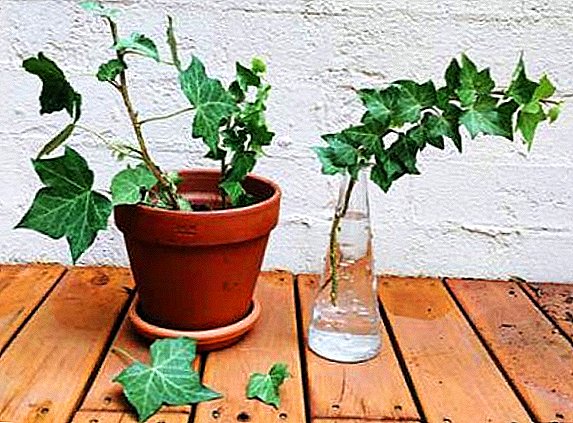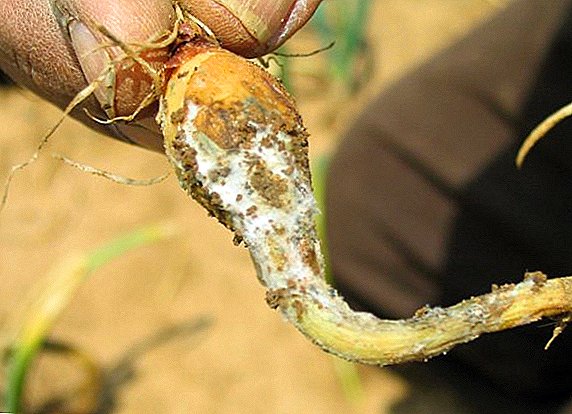 The expression "woe's onion" is not only a well-known idiom, but, unfortunately, a statement of sad fact.
The expression "woe's onion" is not only a well-known idiom, but, unfortunately, a statement of sad fact.
For the richest source of nutrients and a healer of human ailments, onions, it turns out, is itself prone to diseases and invasions of pests.
And in this onion mountain only a man is able to help the most common vegetable. True, the man is still far from a complete victory over the onions of misfortune.
Typical diseases
About fifty of all sorts of microorganisms, fungi and pests in the form of insects confront the bow. And the allies of this harmful hordes are wetlands, clay and floodplain soils, as well as supersaturated soil with fertilized manure and nitrogenous mineral fertilizers. They become the real keepers and sources of onion diseases.
Another serious distributor of the diseases to which this vegetable is prone is affected bulbs planted in the ground.
Among the numerous diseases that a popular vegetable is sick with, microorganisms and fungi have proven to be the most insidious in the form of:
- downy mildew, or perinospora;
- neck rot;
- black mold rot;
- green mold rot;
- bacterial rot;
- Fusarium;
- black mold;
- onion rust.
Learn how to carry out preplant treatment, how to plant onions for winter and spring, how to grow from seeds, how to water, how to feed, why onion leaves turn yellow, what to do with arrows, when to remove onions from the beds, how to prepare for winter, how to store.
Downy mildew
This attack, also called peronospora, is listed as the most dangerous onion disease caused by the fungus, first recorded in England in the middle of the XIX century. The fungus infects all types of onions, and the tireless attempts of breeders to derive a variety of vegetable that would be immune to the disease, until they were successful.
The infection begins to spread from plants affected by the fungus. Scientists have found that in just one and a half or two months, one diseased plant can spread the infection within a radius of two kilometers.
But not only the growing onion strikes this treacherous fungus. Losses due to it in the vegetable storehouses reach 60% of all the bulbs there.
In the beds, peronosporosis develops very quickly and in two weeks is able to hit the entire plantation of plants.  Externally, the disease initially looks like velvety spots of purple-brown color, which quickly grow in size and turn first to yellow and then brown, after which places with a touch undergo necrosis and begin to die off.
Externally, the disease initially looks like velvety spots of purple-brown color, which quickly grow in size and turn first to yellow and then brown, after which places with a touch undergo necrosis and begin to die off.
In the fight against this disease the most effective preventive measures. And first of all on the plantations, it is necessary to alternate the cultivation of vegetables, avoiding re-planting onions in the same place.
It is very important to approach the selection of onion sets, its disinfection, as well as to the preplant sanitization of the beds.
To increase the resistance of the onion to the attacks of the pathogenic fungus, it is useful in the spring with the beginning of the vegetation of the vegetable to make nitrogen fertilizers, and after two weeks - phosphate and potash supplements.
Did you know? Onions contain more sugar than the sweetest pears and apples. Its content in the vegetable is 6% of the total mass of the onion.

Neck rot
This most dangerous, especially during storage, onion disease is also called gray rot, which reflects the color of the infected vegetable tissue between the scales. The disease usually begins after collecting the bulbs, but can occur in the garden.
The main condition for its distribution - any kind of damage on the neck of the bulb, that is, in the place where the bulb turns into leaves. Through this damage, the fungus penetrates the onion turnip and infects it.
It is impossible to cure this disease, so vegetable growers make every effort to prevent the disease. To do this, onion harvest and onion sets dry thoroughly. In addition, onion sets are also disinfected, and the beds intended for onions are sanitized.
Onions are striking with a variety of species - Indian, shallot, sevok, ornamental, leek, batun, chives, onions, slyzun, exibichen, dzhusay, red, multi-tiered, perennial - and each of them can benefit the human body.

Black mold rot
The attack of black mold mold, also called onion aspergillosis, is subjected to vegetable storage during storage, when there is no good ventilation and high temperature. As a result, the bulbs become soft, and the scales, on the contrary, dries out. Over time, black mass appears between the scales.
The infection is carried by air or transmitted from the bulb to the bulb upon contact. First of all, black mold rot infects immature bulbs, as well as poorly dried or have a thick neck.
As a disease prevention, it is recommended to dry the vegetable well, store it in cool rooms and collect only ripe onions.
Green mold rot
This kind of mold rot, also called penicillosis, also leads to the disease of the vegetable mainly during its storage. The initial signs of the onset of the disease are watery patches of brown on the bottom of the bulbs or on their outer scales. After a while, onion turnips begin to exude a smell of mold, and under dried scales, a greenish taint begins to be observed.
The rapid development of this disease is activated due to the high humidity in the vegetable storehouse, which took place during freezing of the vegetable, as well as all kinds of mechanical damage.
In order to avoid the spread of this disease, the vegetable must be thoroughly dried, and five days before it is stored, the storage should be disinfected by burning smoke sulfuric checkers in it. 
Did you know? In exchange for tomatoes, potatoes and sunflower imported from America, Europe repaid the New World with onions brought into it. It is believed that the exchange turned out to be equivalent.
Bacterial rot
This type of disease manifests itself if the bulb is cut. Then it is immediately clearly seen among the healthy scales of several soft dark layers. And the longer the vegetable is stored, the more such words appear, eventually leading to its complete decay.
And insects carry this infection in the form of an onion fly, ticks and other pests.
To protect yourself from this, you should disinfect the onion sets and onion turnips using “Khom”, for which you need to dissolve 40 g of the preparation in a bucket of water and treat the beds at the rate of 1 liter of solution for every 10 square meters. 
Fusarium
This fungal disease affects a vegetable both on plantations and in storage. It manifests itself during the growing season of the plant in withering and decay of green shoots, and during storage - in pinking and softening of the bottom with the appearance of rot.
Learn how to identify and deal with the fusarium of strawberries, cucumbers, tomatoes.To prevent this disease, it is necessary to strictly follow the rules of crop rotation, use only healthy planting material, treat the plantar with copper sulphate before planting, quickly remove already obviously diseased plants or spray them with the "Khom" at the first appearance of brownish spots on the leaves.

Onion rust
This is also a fungal disease, but affects only the leaves. They first appear orange-yellow swollen raid, which gradually turns black. Leaves die in the end.
Learn how to save plants from rust.In addition to competent crop rotation, it is recommended to warm the onion sets at a temperature of 40 ° C before planting for half a day at a temperature of 40 ° C.
It is useful during the increased vegetation of the plant to spray it with a one-percent solution of Bordeaux mixture.
Get acquainted with the rules of crop rotation.
Pests
No less than microorganisms and fungi, numerous pests in the form of insects cause damage to the onion harvest. Not only do they spread the infection in the form of these same fungi, they also directly create big problems for vegetable growers themselves.
Among the most dangerous of these pests are usually called onion flies, shallot aphids and tobacco thrips.
Onion fly
As the name implies, this parasite specializes in this vegetable. The larvae of this fly, which with the onset of heat, start attacking the bulbs from the soil, are a direct danger to the vegetable. It is almost impossible to notice the beginning of this underground attack, but its consequences are extremely evident: the leaves are actively drying.
For the prevention and elimination of this scourge in the people use proven tools in the form of irrigation with salt water, water with potassium permanganate or the use of tobacco dust. 
Shallot Aphid
The main object of attack of this pest is the onion of onions. This aphid is particularly at ease in greenhouses, and it got its name by the name of shallot onions, to which it feeds a particular addiction.
Shallot aphid is mainly located under the outer shells and on young leaves. The presence of this pest can be determined by the curvature and wilting of the leaves, as well as by a noticeable slowdown of the plant in growth.
The main type of prevention of the attack of this aphid on a vegetable include soaking before planting the bulbs in hot water.
Tobacco thrips
This pest loves bulbs most of all, but does not hesitate to leave vegetable leaves. In winter, he hides in the dry scales of the onion in storage and badly spoils its presentation, as well as the inside of the onion turnip. The affected leaves become whitish in color, warp and eventually dry out.
It is rather difficult to fight thrips, because not all means affect it. Best of all proved drugs "VDG" and "Aktar". 
Prevention
Most onion diseases can not be cured, and therefore, preventive measures that prevent diseases come to the forefront of vegetable growers. And the first of them is the correct crop rotation.
Important! It is recommended to plant onions in the same place not earlier than in four years.Tomatoes and cabbage are considered the best predecessors of onions, and it is useful to alternate the beds planted with them by beds with carrots.
Initially, Bordeaux liquid, that is, a solution of blue vitriol in lime milk, was considered the most effective chemical means of protecting vegetables from diseases and pests. This fungicide is still used by summer residents, but in large farms Bordeaux liquid was gradually replaced by zinc-containing fungicides, which are contact-sensitive and require a large amount of their use.
Then the system remedies in the form of Ordan, Revus, Quadris, Alirina-B, Bravo, and Switch, which are effectively protected against the onset of gray rot and powdery mildew, are widely used. And from the invasion of onion flies well protect the funds "flyer", made by 5 g per square meter, and Zemlin, which make 3 g per square meter of the bed, as well as the use of the drug "Tabazol" by spraying 3 g per square meter.
And from the invasion of onion flies well protect the funds "flyer", made by 5 g per square meter, and Zemlin, which make 3 g per square meter of the bed, as well as the use of the drug "Tabazol" by spraying 3 g per square meter.
Important! Onions grown on feathers are not allowed to be treated with pesticides.The proven folk remedies, such as tobacco, for example, have not lost their preventive power and are still used by gardeners. In the fight against the most dangerous downy mildew, tobacco broth helps well, which is prepared as follows:
- In 10 liters of water you need to pour 400 g of tobacco.
- Mixture insist two days.
- Then boil it for two hours.
- After that, the solution must be filtered and diluted with ten more liters of water.
- In the broth you need to add about 100 ml of liquid soap.
- Plantings are sprayed with the decoction every two weeks, repeating the procedure three or four times.
Reviews onions diseases and methods of dealing with them
Honestly, I have never been able to get high beds, ridges, although their use is very reasonable. On such beds, watering 10 liters / 1 square meter - 1 time per week and the onion does not get wet, and the moisture is retained, and the ground warms up well, i.e. less conditions for the development of disease. For this purpose, soil loosening is usually carried out once every two weeks to a depth of 3 cm.
Very good advice - mulching onions with 2-3 feathers. On the ridges or not, anyway, mulching helps a lot to preserve moisture and prevents weeds from growing, with a good layer of hay or grass. But again you need to look at the circumstances. If the summer is rainy, then on the contrary, this technique is not needed. And somewhere in the middle of July, grown onion heads need to be freed from the soil, it is necessary for ripening and growth of heads, they must “look out” 1/3 -1/2 from the soil. And in the middle of August, when feathers are no longer formed and are lying, you can start cleaning the onions.

So, what they write:
The tips of the onion feather may turn yellow due to the lack of watering in hot weather. If everything is normal with watering and rain, then there may be 2 reasons: lack of nutrients or onion fly. The first reason can be eliminated by feeding the plants with a complete complex fertilizer. Worse, onion and garlic are harmed by the onion fly. Check by pulling out a bulb with a yellow feather or by digging the ground near it, for small worms. If there is, then the onion fly prevails.
The options for deliverance are as follows. Dilute a glass of salt in a 10-liter bucket of water, add potassium permanganate to pink color, and make grooves between the rows of onions, garlic, and pour over the ground. If this does not help, dilute 2 tablespoons of liquid ammonia into a bucket of water and, using the same technology, cultivate the land around the plants. If you are not satisfied with one or the other, then use urea.
I personally have already tried kerosene and liquid ammonia, nothing helps. It’s probably too late ... It was necessary to process everything in early spring.




